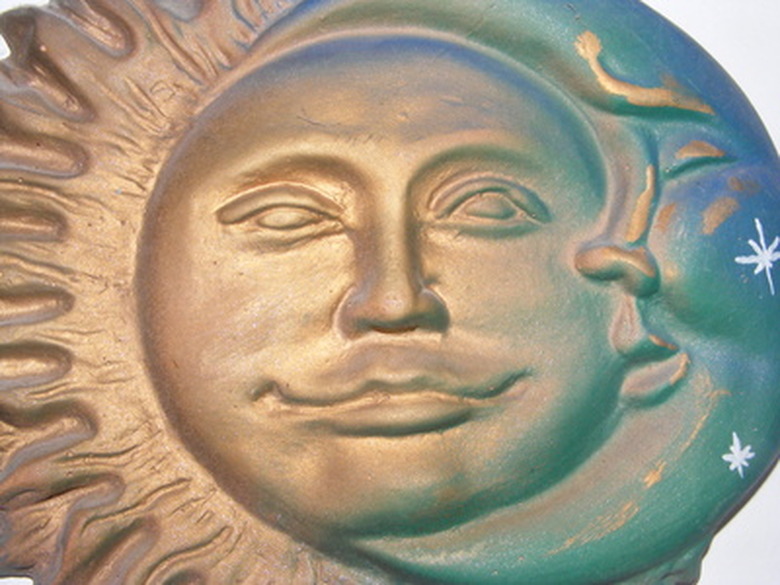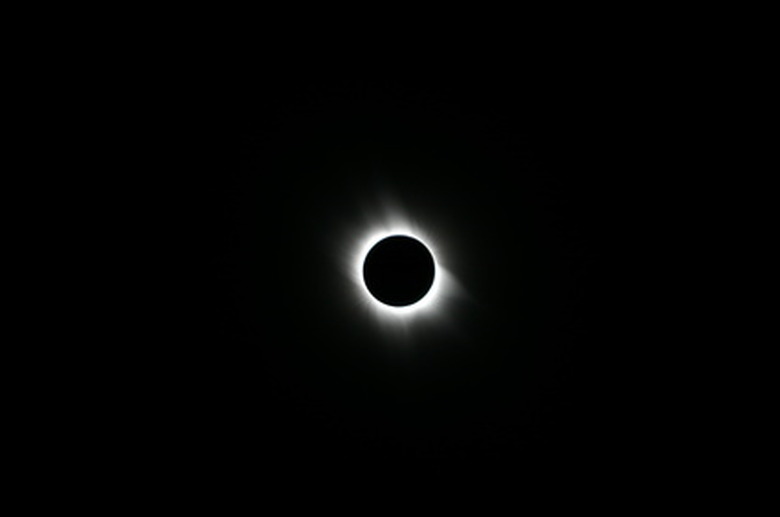Similarities Of The Sun & Moon
Hanging large and reliably in the sky, both the sun and moon figure large in humans' consciousness. Their prominence has earned them symbolic meaning for us, often representing opposites like male and female. Yet, the sun and moon also have similarities. Some–like the fact that both bodies are spherical–are obvious, while something like rotation might be less apparent.
Apparent Size
Apparent Size
The sun's radius, at 432,200 miles, says NASA, is 400 times larger than the moon's radius, which is about 1,079 miles. Regardless, up in the sky, the sun and the moon look similar in size as viewed from the earth. How can this be? The reason lies in how far away they are from Earth. Though the sun is 400 times the size of the moon, it is also 400 times farther away, making the two bodies seem similar in size from the perspective of someone on Earth, according to earthsky.org.
Cyclical Reliability
Cyclical Reliability
The cycles of the sun and moon as they relate to the earth are so reliable that they have inspired systems of timekeeping. In the case of the moon, its orbit provides a cycle of phases that we can rely on month after month, year after year. Lunar calendars like the Islamic calendar count on the moon to mark out months, with 12 months marking out a year. Similarly, a solar year also relies on cycles and orbits–in this case, Earth's orbit around the sun. This system isn't perfect, because a year isn't perfectly divisible by days, which we measure according to the earth's rotation. During a leap year, an adjustment makes up for that, with a day being added to February, usually every four years. A purely lunar year also isn't perfect, because it doesn't match up with the seasons reliably, since those occur because of the earth's orbit around the sun. In some lunar calendars, a month is added to bring things into sync.
Gravity
Gravity
Both the moon and the sun possess gravity, and both exert this gravitational force on the earth. The sun's gravity captured Earth so that our planet revolves around the sun. The moon's gravity, which is only a fraction of Earth's, is still strong enough to pull water, creating tides.
Rotation
Rotation
Another similarity between the sun and moon is that both bodies rotate, and both take a long time to complete a rotation by Earth standards, where one rotation takes about 24 hours, giving us the length of our day. The moon spins once on its axis every 29.5 Earth days. Parts of the sun take even longer. At the sun's poles rotation takes up to 36 days, while the equator takes a little over 25 days for a full rotation. Different parts rotating at different speeds is called differential rotation. The sun has differential rotation because, being composed of gas, it isn't solid.
Cite This Article
MLA
Johnson, Sophie. "Similarities Of The Sun & Moon" sciencing.com, https://www.sciencing.com/similarities-sun-moon-6891232/. 24 April 2017.
APA
Johnson, Sophie. (2017, April 24). Similarities Of The Sun & Moon. sciencing.com. Retrieved from https://www.sciencing.com/similarities-sun-moon-6891232/
Chicago
Johnson, Sophie. Similarities Of The Sun & Moon last modified March 24, 2022. https://www.sciencing.com/similarities-sun-moon-6891232/

